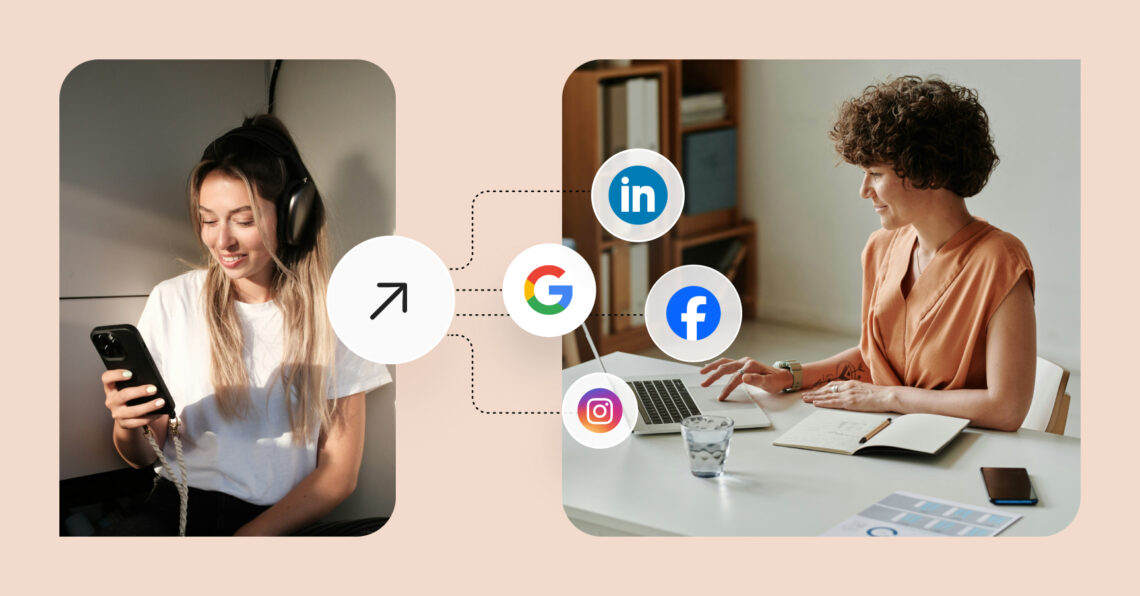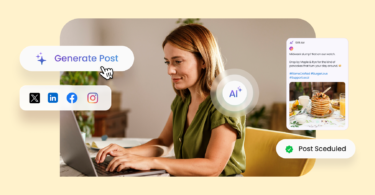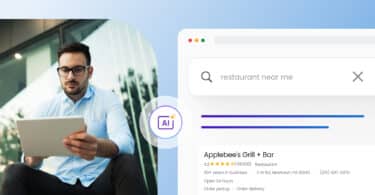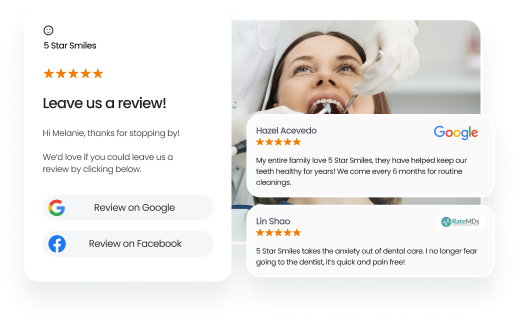In this crowded digital world, grabbing someone’s attention is easy. But keeping it? That’s the real challenge. With billions of scrolls and swipes happening every day, brands are still out of sync with where audiences actually spend their time.
To figure out why, we conducted a survey in early 2025 to compare consumer behavior with business investment. Our survey revealed a clear misalignment: while consumers spend more time on TikTok and YouTube, many brands continue to invest heavily in Facebook and Instagram.
This blog unpacks the attention gap, what platforms are gaining traction, which are losing momentum, and what your brand should do now to succeed in 2026 and beyond.
Table of contents
How we measured the gap
Consumer sample: 1,300 adults, U.S. & Canada, balanced for age, gender, and region.
Business sample: 300 firms spanning retail, healthcare, home services, financial services, and multi-location franchises.
Survey window: Q2 2025.
Approach: Matched-pair analysis of self-reported usage (consumers) against channel mix (brands) to expose over- and under-investment.
The platform gap: Consumers vs. brands
Ever wondered why aren’t many your posts gaining traction? The simple reason is that audiences and content are often not in the same place.
Our 2025 survey revealed a clear divide. Consumers are spending more time on TikTok and YouTube, while brands continue to focus on legacy platforms like Facebook and Instagram. This mismatch creates wasted effort and missed opportunities.
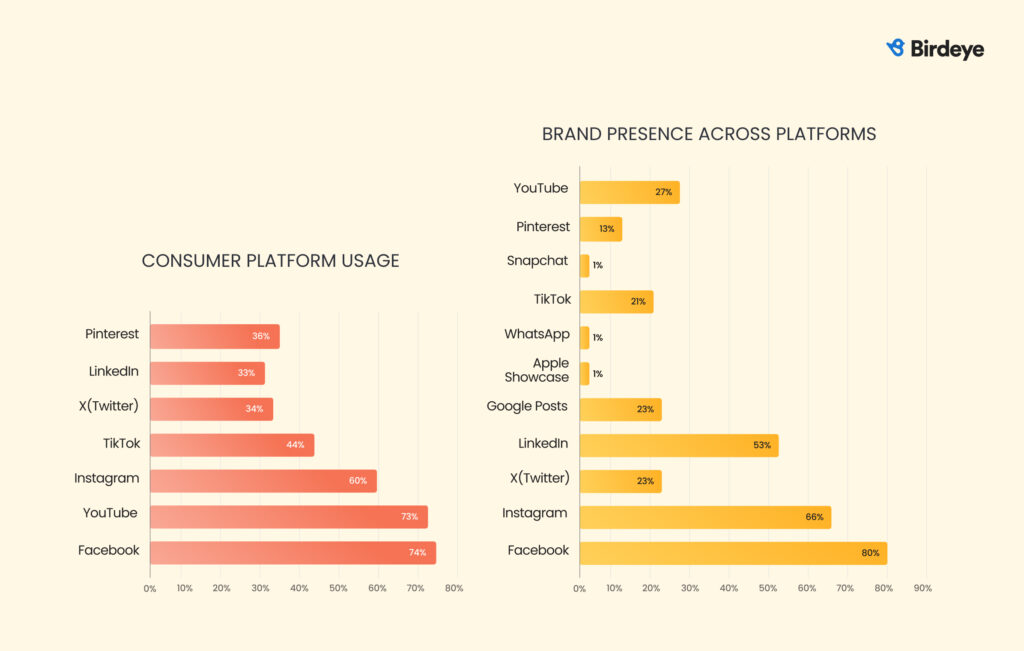
This attention gap matters. Brands that keep relying on older platforms are increasingly out of sync with where consumers are actually active.
Platforms to watch in 2026
Not all social platforms are growing at the same pace. As the chart shows, Facebook is flattening, Instagram remains steady, and LinkedIn is gaining ground. But two platforms stand out above the rest: TikTok and YouTube. These are where time spent is accelerating fastest, and where brands are still lagging behind.
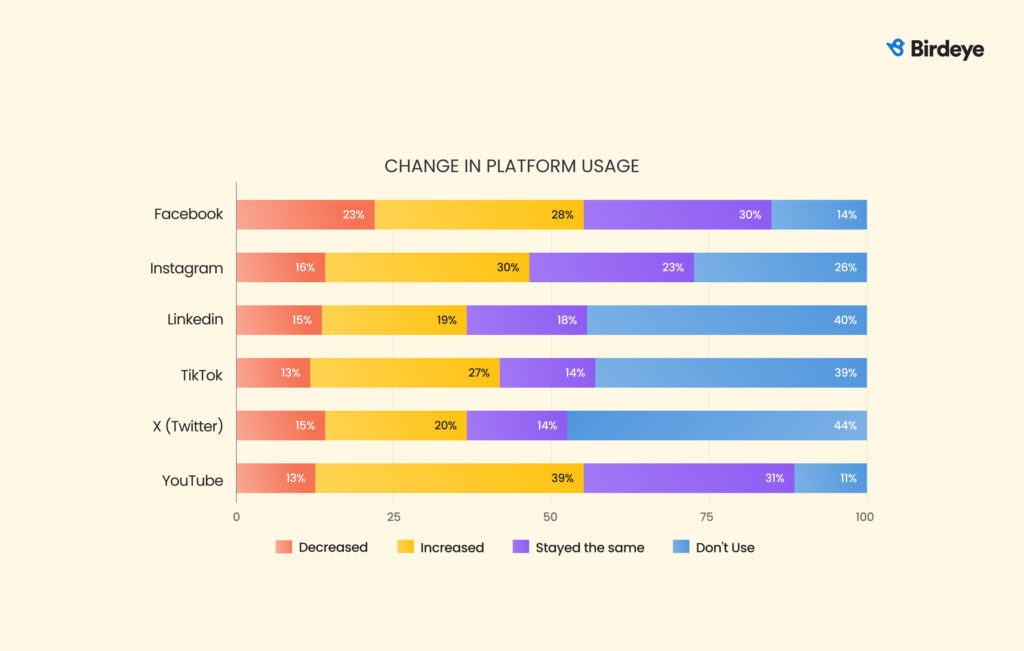
Too often, businesses repurpose Facebook or Instagram posts and push them onto TikTok and YouTube. That approach rarely works. Each platform has its own rhythm, voice, and creative expectations.
To win attention in 2026, brands need to create content designed specifically for the platforms where their customers are already engaged.
The platforms driving social media in 2026
TikTok: The internet’s discovery engine. Where trends begin, memes spread, and products go viral. Quick, creative, and built for real-time engagement. Now with 1.6 billion monthly active users, mostly Gen Z and Millennials.
YouTube: The internet’s classroom and stage. Tutorials, explainers, and long-form storytelling dominate. The top platform for authority, exploration, and sustained attention.
Why brands can’t afford to underinvest
Despite this shift, many brands still treat TikTok and YouTube as secondary channels, relying on recycled Instagram or Facebook content. That approach doesn’t translate. These platforms demand native, visual-first storytelling that’s short, authentic, and to the point.
The Birdeye take: If you’re not creating platform-native content, you’re missing peak attention and influence. Birdeye Social AI helps enterprises publish tailored, visual-first content built for TikTok and YouTube’s unique strengths.
Time spent on social apps: What it means for brands
The true signal of engagement isn’t how many people log in, it’s how much time they spend once they’re there. Social media isn’t a quick check-in anymore; it’s part of daily routines. That means brands aren’t just competing for eyeballs, but for meaningful slices of consumer time.
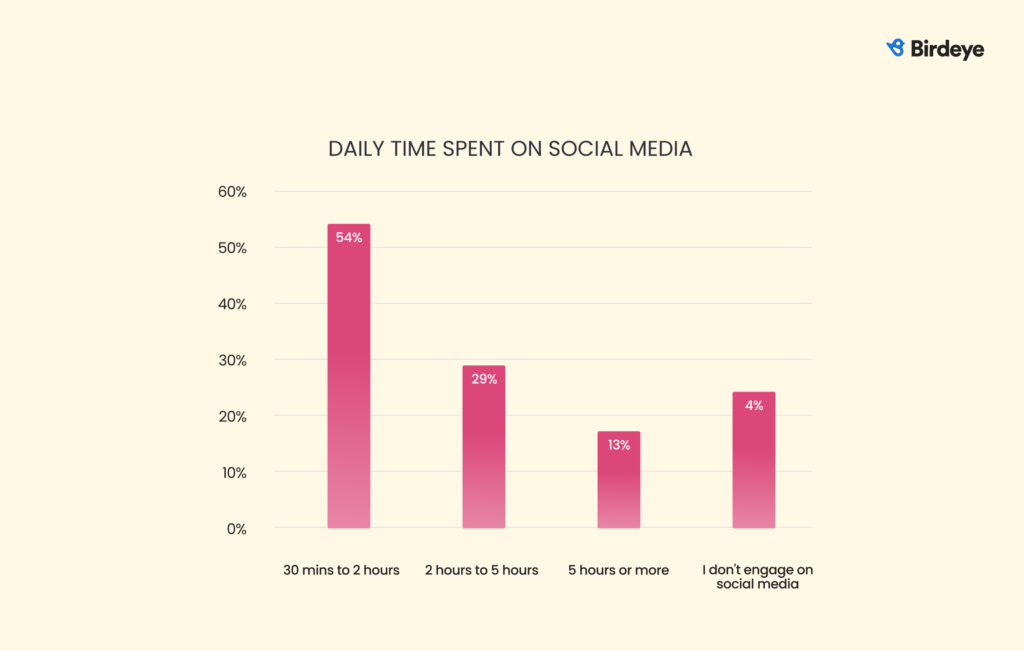
But here’s the catch: while consumers are giving more time, many brands are still misfiring in how they show up.
Posting often isn’t the same as posting smart
Many businesses post several times a week or more, but frequency isn’t the same as strategy. Without tailoring by platform or location, brands risk wasting effort.
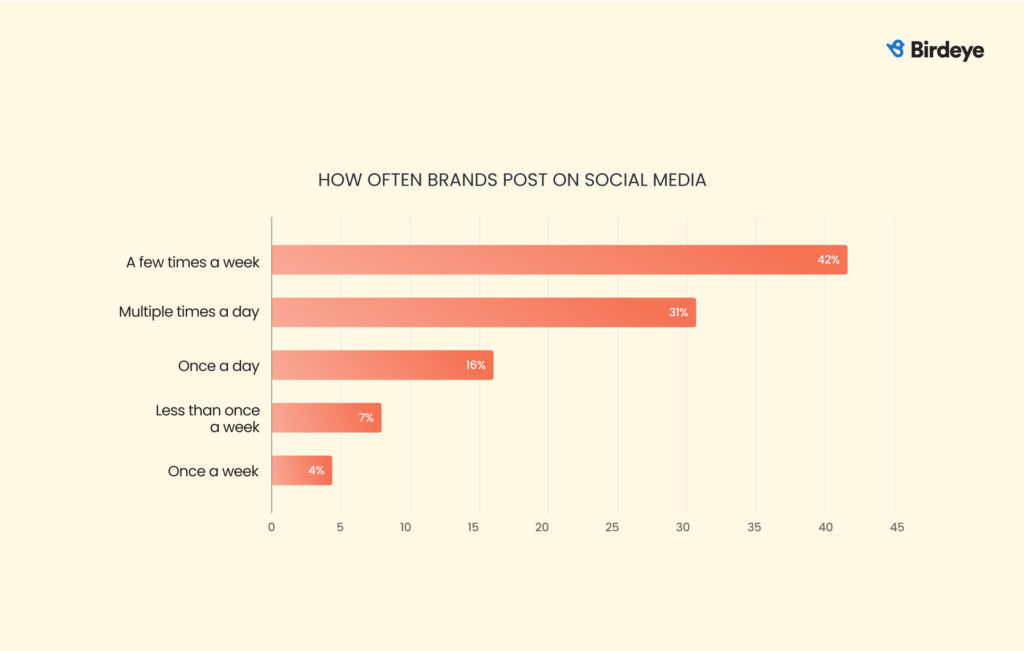
Where brands need to pivot
On the surface, many businesses appear socially active. In fact, over half describe themselves as “very involved” in social media. But activity alone doesn’t equal alignment. When we dig deeper, the cracks start to show: most businesses still run a single, shared social profile across all locations, even though 57% of consumers prefer following local accounts.
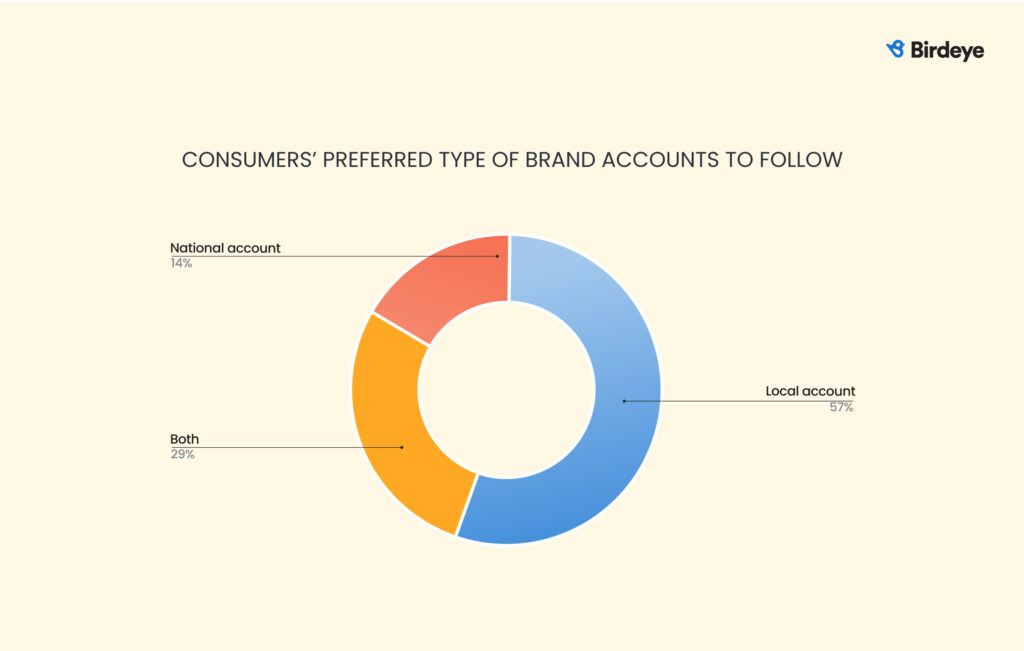
Why does local matter so much? The answer lies in relevance.
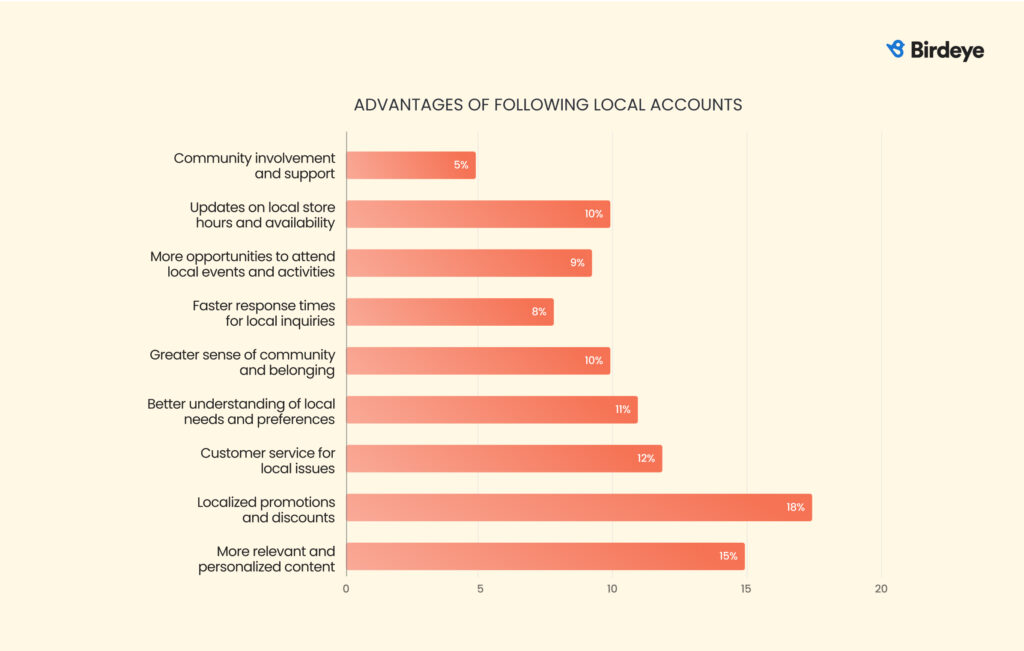
Consumers prefer local pages because they feel more relevant and personal. Local accounts can deliver:
- Content tailored to the community
- Promotions and deals specific to the area
- Faster responses to local questions
- Better support for neighborhood needs
Brands that rely on generic, one-size-fits-all content risk fading into the background. Businesses that invest in local presence, on the other hand, earn more attention, stronger loyalty, and higher conversions.
What content format works and what doesn’t
It’s not only about where you post, but what you post. Different content formats perform differently, and our data highlights which ones truly capture engagement.
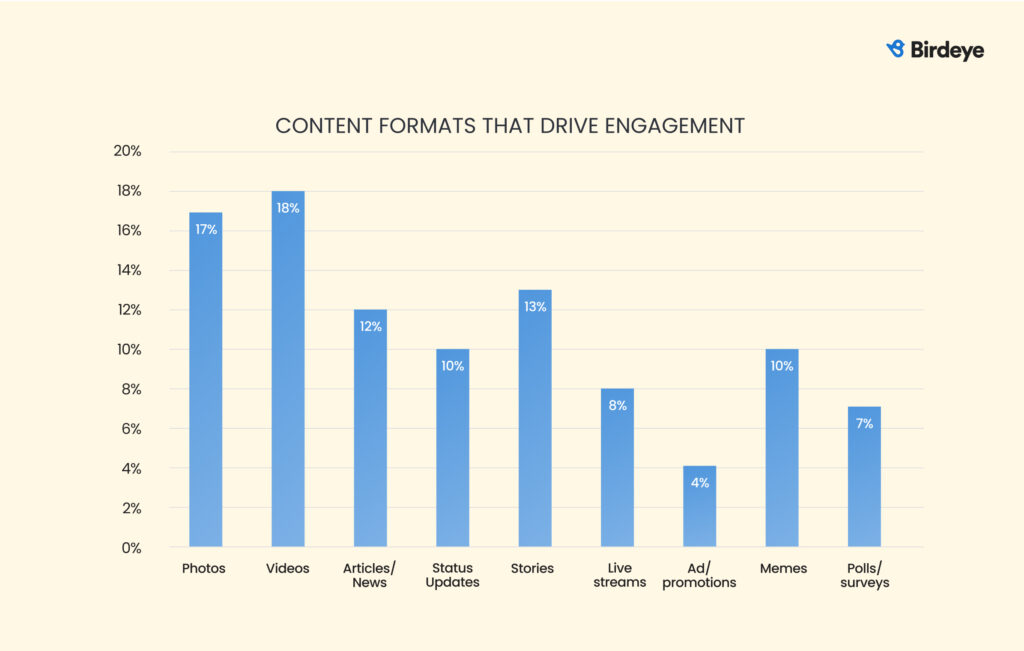
The message for brands is simple: it’s not just about being present on a platform, it’s about showing up with content that feels native, engaging, and easy to consume. Visual storytelling, whether through video or strong imagery, consistently outperforms static or boilerplate messaging because it speaks the language of today’s feeds.
Did you know?
Nearly 1 in 3 consumers want content tailored to their community, but most businesses still deliver broad, generalized messaging designed for scale, not impact.
Matching content to platform
Each platform serves a different audience mindset and requires its own creative style:
- Instagram: Visual storytelling and aspirational content – best for lifestyle, retail, and wellness.
- TikTok: Discovery, spontaneity, and trends – ideal for creative, real-time engagement.
- YouTube: Long-form and explainer content – perfect for education and authority-building.
- LinkedIn: Professional voice and thought leadership – essential for B2B and recruiting.
- Facebook: Broad reach and community groups – still strong with older demographics, useful for awareness but less practical for breakout growth.
- Threads: Niche, fast-growing platforms – valuable for testing with micro-communities and early adopters.
Platform strategy checklist
Use this 6-point checklist during quarterly planning to keep your strategy aligned with where your audience actually spends time:
- Audience alignment: Is your primary platform the same one your customers use most?
- Native creative: Are videos, images, and captions designed for each platform’s format and tone, not recycled from another channel?
- Short-form focus: Do you have a recurring video series under 60 seconds to capture high completion rates?
- Local amplification: Do frontline teams have tools and guardrails to publish location-specific content?
- Signal tracking: Are you prioritizing time spent, saves, and shares over vanity metrics like follower counts?
- Emerging bets: Is at least 10% of your social budget reserved for new formats or experimental platforms each quarter?
Social media trends you can’t ignore
The way people use social media keeps changing. These four trends stand out as the ones brands can’t afford to ignore:
- Short-form video is becoming the default. Reels, Shorts, and TikToks consistently outrank images on every major platform. Video isn’t optional anymore, it’s the format audiences expect.
- Social commerce is mainstream. Shoppable posts, influencer recommendations, and in-app checkout are standard across Instagram, TikTok, and YouTube. Discovery and purchase now happen in the same feed.
- AI is transforming social content. The AI-in-social market is projected to reach $5.7B by 2026. Tools like Birdeye Social AI are leading the shift, helping enterprises create, automate, and optimize content at scale.
- Niche platforms are gaining ground. Threads and Lemon8 don’t rival Meta yet, but they’re attracting loyal micro-communities. A flexible strategy is essential to follow customers wherever they scroll.
What this means for the brands: Staying competitive means knowing which of these shifts matter most to your audience, and showing up ready.
FAQs
The top trend is the dominance of short-form video. TikTok, Instagram Reels, and YouTube Shorts now outperform images on every platform. Social commerce features, like shoppable posts and in-app purchases, are also becoming standard.
Consumers spend most of their time on TikTok and YouTube, but many brands still invest heavily in Facebook and Instagram. This misalignment creates wasted effort and missed opportunities for engagement.
TikTok and YouTube should be top priorities for reach and engagement. LinkedIn remains essential for B2B and professional visibility. Facebook still matters for older demographics, but it is no longer where growth happens.
Birdeye’s 2025 survey found that more than 80% of consumers spend between 30 minutes and 5 hours daily on social platforms, with TikTok and YouTube leading in time spent.
Short-form videos under 60 seconds, visually engaging posts, and locally tailored content drive the highest retention and engagement.
AI will handle much of the heavy lifting: creating, scheduling, personalizing, and optimizing content. Enterprise tools like Birdeye Social AI make it easier for brands to scale short-form and location-based content without losing quality.
Final word: Don’t just post. Strategize.
Being active on social isn’t enough. Your customers have shifted, and your strategy must follow suit.
At Birdeye, we make it easy to keep up. Our Social AI platform helps businesses create, schedule, and monitor content across all major platforms and locations. Whether you need to localize posts, experiment with short-form video, or simply stay consistent, we’ve got you covered.
- Stay visible.
- Stay relevant.
- Show up where your audience is.
Ready to explore how Birdeye Social AI can help you transform your social media marketing efforts? Watch our free demo to learn more.

Originally published
